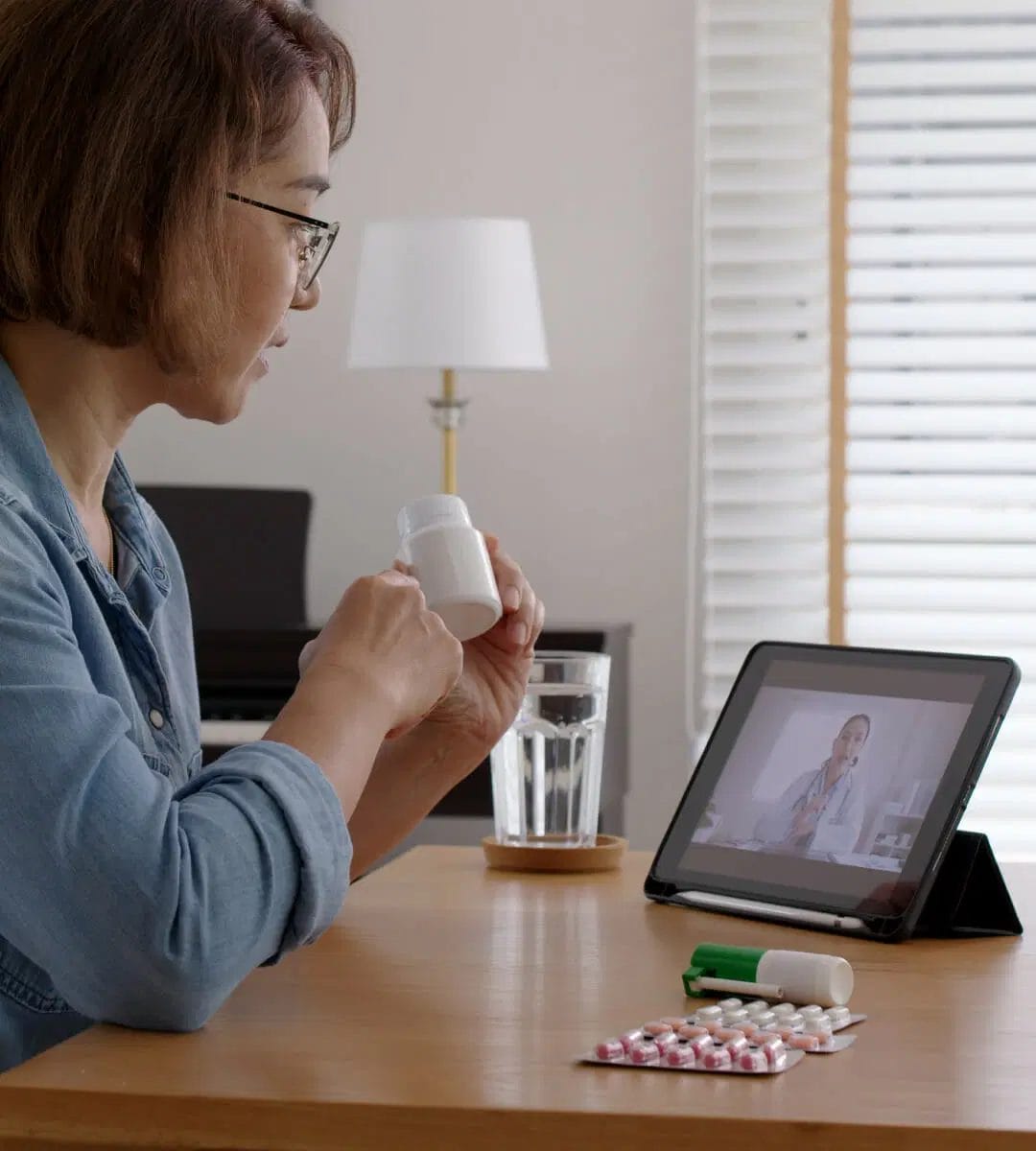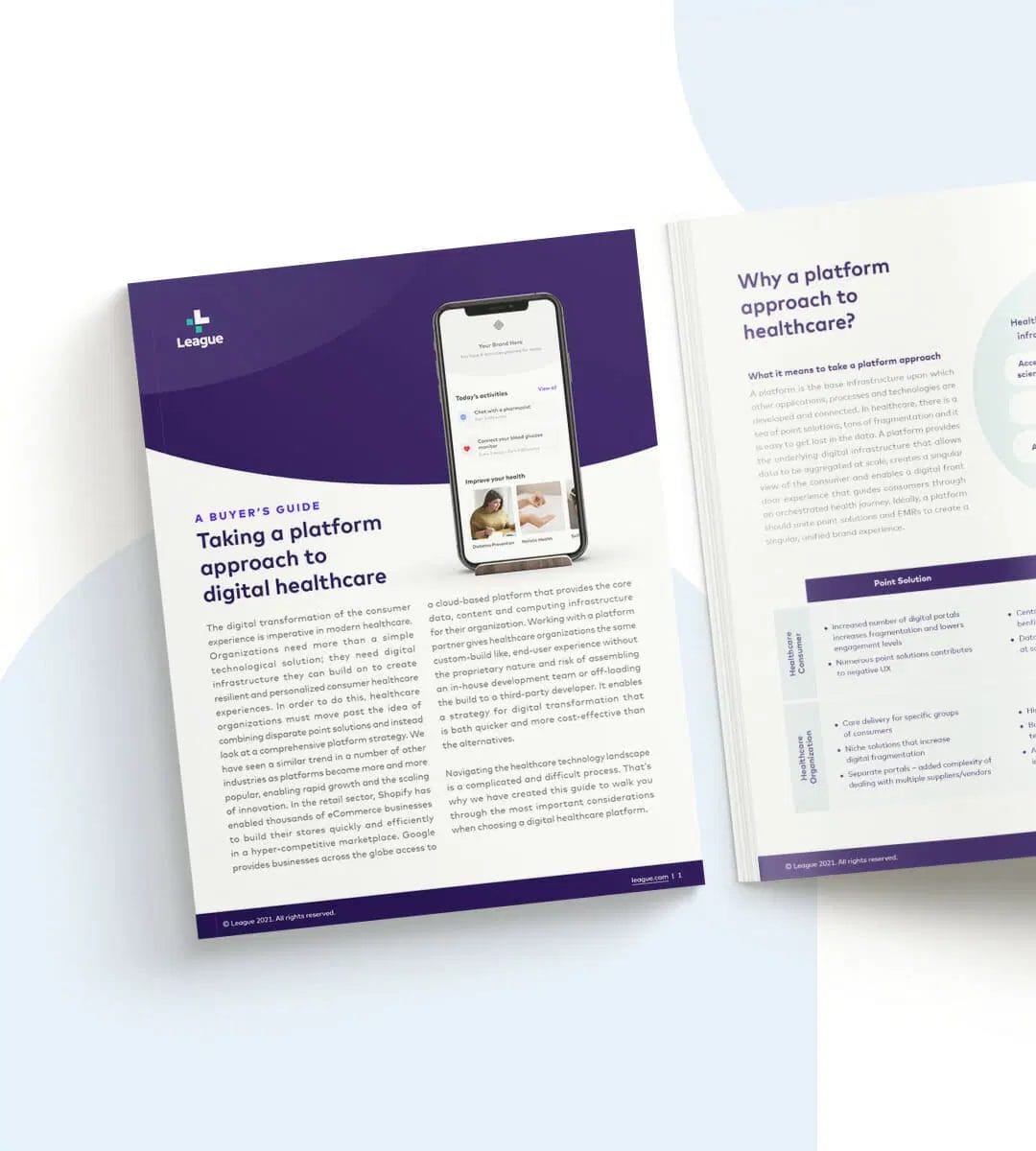Summary
- League’s platform accelerates healthcare consumerization by integrating diverse data sources and enabling personalized experiences.
- Built on the FHIR standard, League’s data platform ensures interoperability, facilitating personalized health journeys, powering industry-leading engagement and improved health outcomes.
- By unifying siloed health data, League’s platform provides a comprehensive view of consumers and enables targeted interventions.
At League, we aspire to accelerate consumerization of healthcare
Amid the COVID-19 pandemic, patients turned to digital channels for telehealth visits, prescription renewals, specialty consultations and more. This shift allowed people to become more comfortable interacting virtually with their health. The pandemic has also shined a spotlight on the importance of personal health since individuals with pre-existing health conditions often had a higher risk of contracting a serious case of COVID-19. In response, many consumers began to take charge of their health using digital resources to track their fitness and manage chronic conditions.
With these consumer demands and expectations as a backdrop, there is a greater sense of urgency for incumbent payers, providers and consumer health companies to accelerate their digital transformation. Industry leaders across all segments of the healthcare ecosystem are now in a race to improve their end-consumer experiences. Interoperability of health data across both traditional (e.g. EMR, claims, health questionnaires) and novel (e.g. wearables) data sources is a key element to this process.
Data silos create a significant barrier to the digital transformation of incumbent payers, providers and consumer health companies. Through our Health OS™, we support the integration of partner- and user-derived data sources to personalize the experience for our users, resulting in industry-leading engagement and enabling rich insights on the consumers, patients and members of our partners.
FHIR is at the core of our data platform
At the center of our capability to integrate across data silos and personalize the consumer experience is our data platform, based on the Fast Healthcare Interoperability Resources (FHIR) standard. We use FHIR as the data model to support the integration of healthcare data on our platform and to model data that is generated by members as they interact with the platform. Our Health OS™ supports a number of common capabilities for consumers to engage in their healthcare, which is made possible by the FHIR data model.

For example, as patients complete health assessments and pulse checks within our product, their responses are directly mapped to the QuestionnaireResponse resource in FHIR. Another example is demonstrated by our Health Journey™ experience, a key capability of the League platform that enables users to engage in healthy activities as part of their personalized health plan and can be mapped to the CarePlan resource in FHIR.
Bringing together these different data sources creates a holistic view of our users which we use to personalize their experience and drive engagement. The integration of these data sources also empowers our partners by deriving key insights into user behavior and healthcare engagement. Previously these partners needed to carefully curate a variety of externally and internally sourced datasets to develop this level of characterization and understanding of their consumer or patient. With League’s Health OS™, our partners can incorporate their existing data sets along with data generated and integrated on the platform to get a complete 360° view of their consumers or patients.
Personalization driving high engagement, built on our FHIR data platform
Personalization is key to high engagement in digital health solutions. Today’s healthcare consumers expect an experience closer to Netflix and Spotify. So what are these companies doing right that healthcare can emulate? Netflix’s engagement rates are unprecedented with a 97 percent year-over-year renewal rate according to Unlocking Consumer Engagement in Healthcare from The Health Management Academy. So how does healthcare compete?
Engagement is League’s differentiator, with an NPS of 80 and MAU at 12X the industry average. Our Health Journey™ experience uses machine learning to make recommendations to consumers regarding healthy activities they should take to engage in improving their health. Frequently unseen as a requirement, applying effective machine learning at scale relies on having a consistent data model. Most enterprises are challenged by the harmonization of data sources and frequently adopt various ontologies and aligned reference data models to support their data analysts and data scientists as they conduct analyses and build models. By leveraging FHIR, not only do we aim to support healthcare data interoperability but we also leverage our longitudinal health record to enable personalization for members. League’s Health OS™ empowers our partners to deliver highly engaging and personalized healthcare experiences to the consumer or patient, ultimately driving the adoption of healthy behaviors and outcomes.

